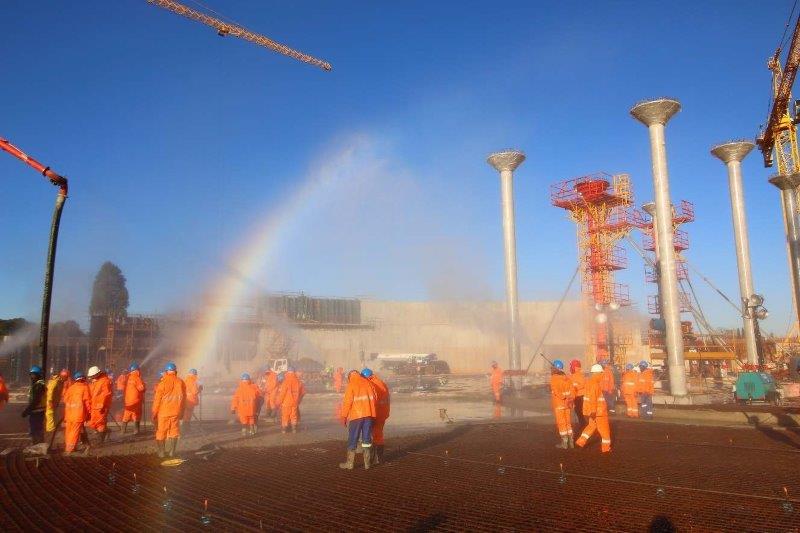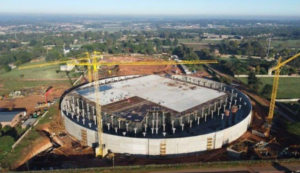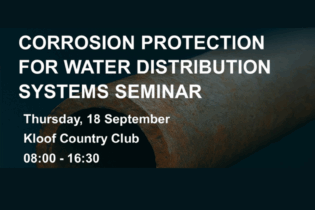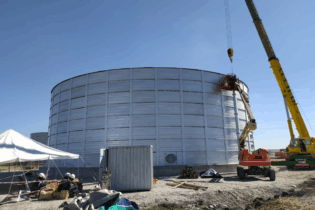Rand Water – the largest bulk water utility on the African continent – continues to invest in infrastructure and make repair and maintenance a priority.
Access to clean water for every South African is a constitutional right. But for this right to be fully realised, there must be effective and comprehensive infrastructure development, with a focus on its upkeep. Unfortunately, the larger part of South Africa’s water infrastructure, built more than four decades ago, must be replaced to reduce the high rate of wastage through pipeline leaks. Fortunately, Rand Water has continued to focus on infrastructure maintenance. It has also been investing in new infrastructure such as water purification plants, reservoirs, pump stations, pipelines, pump stations, as well as automation and electrical equipment. Rand Water could have faced the stark reality of not adequately providing water to its customers in line with its mandate if it had not invested in infrastructure. In the last financial year, Rand Water spent billions of rand through its capital expenditure plan. It entailed the upgrading, refurbishment, and replacement of assets across the entire Rand Water network. During this year alone, the water utility unveiled two noteworthy projects: the 210 Mℓ Vlakfontein Reservoir in Benoni and Phase 1 of Station 5A at the Zuikerbosch Water Treatment Plant.
However, the addition of large quantities of water to Rand Water’s system should not encourage water wastage. Consumers must continue using water sparingly because of South Africa’s broader water scarcity.

Challenges
In its efforts to implement the mandate, Rand Water encounters numerous serious challenges that have the potential to compromise or even derail either the development or refurbishment of water supply infrastructure. These include, but are not limited to, vandalism, encroachment on its servitudes, non-payment of water services by local municipalities, and actual corrosion of its pipelines after many years of performance.- Vandalism: Although the water utility has enlisted the services of security companies to protect its infrastructure, in some areas, these pipelines are still vulnerable, and this is where thieves can damage the pipelines, valves, and steal valves – and, in some instances, water itself.
- Encroachment of servitudes: Formal and informal encroachment are somem of Rand Water’s challenges that may delay the replacement of worn-out infrastructure. Formal encroachment is a situation where a formal housing project has been developed, and informal encroachment refers to a situation where an informal settlement is built on top of Rand Water’s pipeline or servitude. These situations have the potential to impede Rand Water from having free access to the land for maintenance purposes.
- Non-payment: Both non-payment or late payment by municipal customers may negatively affect Rand Water’s financial stability.
- Corrosion: The gradual loss of material from a metal surface is one of the major causes of degrading pipeline performance. As the coating of pipes wears out, corrosion starts due to the moisture in compressed air. These steel pipelines then need to be replaced.

FAST FACTS
- Established in terms of Chapter 6 of the Water Services Act (No. 108 of 1997) and listed as a National Government Business Enterprise – sole shareholder
- Largest water utility in Africa
- Has a global reputation for providing water of high quality and has consistently exceeded national standards and international guidelines on water quality
- Abstracts raw water from the Vaal Dam and conveys
it through pipelines to the two purification systems: the Zuikerbosch and Vereeniging water treatment plants - Distributes purified water to the secondary Palmiet, Zwartkopjes, Mapleton, and Eikenhof booster
pumping stations - Provides 4 400 Mℓ/day of bulk potable water to over 16 million people
- Supplies Gauteng, parts of Mpumalanga, the Free State, and North West
- Besides municipalities, its customer base includes mines and farmers
- Supplies an area covering 37 000 km2
- Pipeline infrastructure spans 3 500 km
- 59 reservoirs
- Been in operation for 120 years (since 1903)








